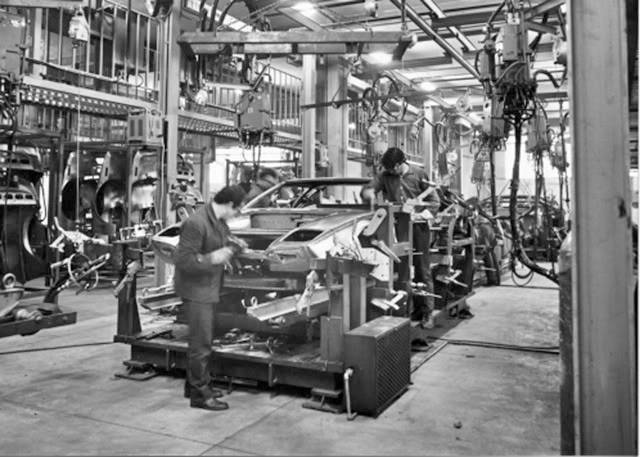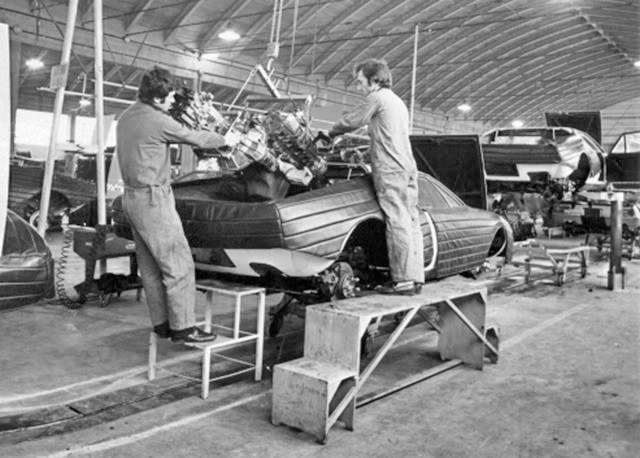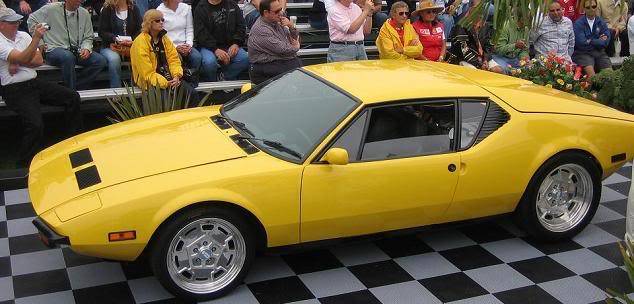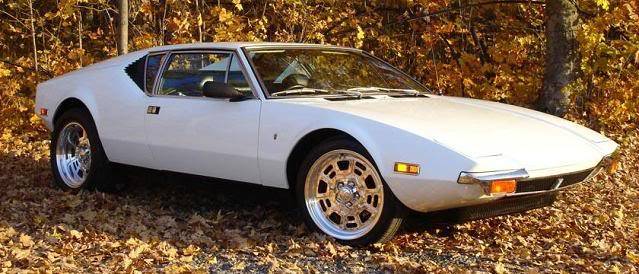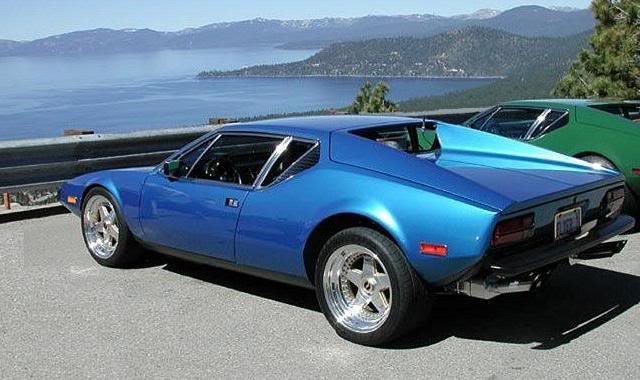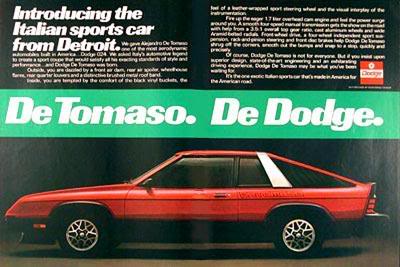|
The Pantera was initially designed to "Ford specification" for the average American driver and to a price point and level of trim that made it competitive in the American sports car market where the primary competition was the Corvette, Jaguar and Porsche. Although other Pantera models quickly developed for the international market , the Ford spec Pantera was the only Pantera imported to North America by Ford. Some major features and many minor details of the Ford spec Pantera evolved during its 4 years of production.
DeTomaso gained control of the coachbuilding firms Carrozzeria Ghia and Carrozzeria Vignale in the aftermath of a series of corporate stock buy-outs and trades in 1967 and 1969. The companies involved were DeTomaso, Rowan Industries (DeTomaso's financial backers) and Ford. Ghia was known for its design prowess, Vignale for its modern manufacturing capability. Having these 2 coachbuilders at their disposal enabled DeTomaso to design and construct coaches in-house. As previously mentioned, the Pantera's coach was designed by Ghia. The coachworks at Vignale was to play an equally important role in building Panteras for Ford.
Ford planned to sell 5000 Panteras per year, which required a manufacturing capacity of 96 cars per week. Neither DeTomaso nor Vignale had ever assembled cars in the numbers expected by Ford. DeTomaso's strategy for assembling cars on such a large scale was to divide the assembly process between two facilities; the coaches would be assembled at the Vignale coachworks in Turin Italy and then transported 185 miles by truck to the DeTomaso headquarters in Modena Italy where the drivetrains and suspensions would be installed. This strategy required two assembly lines, one at the Vignale coachworks and one at DeTomaso headquarters, plus a fleet of trucks.
DeTomaso was ready to begin assembling Panteras months before construction of the assembly lines was finished. Rather than wait for the completion of the assembly lines, DeTomaso began assembly of Panteras at the Vignale Coachworks using "old world" methods; artisans pushed each car from station to station within the coachworks on large dollies, the parts were hand fabricated rather than stamped out by machinery. The earliest Pantera prototypes used for testing and promotional purposes had been fully assembled at Vignale in just this fashion. The Panteras with hand fabricated coaches are known as push button Panteras due to the push button door operating mechanism they were equipped with. This unique mechanism was a carry-over from DeTomaso's previous sports car, the Mangusta. Push button Panteras have chassis numbered 1001 to 1382. Push button Pantera assembly began in earnest in January 1971, only 16 months after the signing of the agreement between DeTomaso and Ford! A few of the push button Panteras have 1970 assembly dates, but most of those in the various registries have assembly dates falling within the months of January through April 1971, before the assembly line began operating. Several push button Panteras have 1972, 1973 and 1974 assembly dates. The coaches with late assembly dates were probably only partially assembled when the assembly line began operating, so they were set aside and finished later as time and man-power permitted. A push button Pantera, chassis 1286, is considered the lowest numbered Pantera imported to the US by Ford. It is possible up to 97 push button Panteras were included in the earliest shipments of Panteras to North America (chassis 1286 through 1382).
The assembly lines in Turin and Modena began high volume assembly of coaches and finished Panteras in April of 1971. Many parts that had been hand fabricated on the push button Panteras were fabricated by stamping or other high speed methods for the assembly lines. Many details such as the rear hood release mechanism were redesigned. It is assumed the chassis number of the first Pantera coach to roll off the assembly line in Turin was 1383. The Ford spec Panteras assembled on the assembly line prior to the Pantera L (encompassing chassis numbers 1383 to 4268) are referred to within the Pantera hobby as Pre-L Panteras. Soon after assembly line production began a flaw in the plan to build 5000 Panteras per year was discovered. The supplier of the transaxles, ZF of Germany, was capable of supplying only 40 model 5DS-25 transaxles per week, far short of the 96 per week required to meet Ford's production goal. DeTomaso's capacity to assemble Panteras was limited by the supply of transaxles to under 2100 Panteras per year; in fact approximately 2100 Panteras were assembled during the 1972 and 1973 model years.
The US federal government required all passenger cars sold in the US to be equipped with front and rear 5 mph impact resistant bumpers and lower emission engines for the 1973 model year. The Ford spec Pantera evolved again in August 1972, beginning with chassis 4269, to comply with these mandates. Large, black, front and rear impact resistant bumpers were installed. The coach was revised with integral front turn signal pods. The compression ratio of the motor was dropped to 8.0 to 1 and exhaust gas recirculation was fitted. The fuel filler was relocated from the engine compartment to the "fish gill" on the left hand side of the car (an improvement in both safety and convenience). Ford also specified a switch from 70 series radial tires (Michelin or Pirelli) to wider 60 series Goodyear Arriva bias ply tires. This third version of the Ford spec Pantera was named the Pantera L.
DeTomaso was marketing a higher performance Pantera for the European market called the GTS. The car featured wheel well flares, wider wheels, 50 series Pirelli P7 tires, engine and suspension upgrades, a racier looking paint scheme and improved materials in the interior. When Pantera enthusiasts in North America learned of the GTS offered in Europe they urged Ford to import the GTS to North America. Instead of heeding their appeal and importing the European GTS, Ford offered its North American customers a Pantera L painted and badged to look like the European GTS. None of the mechanical changes made to the European GTS were made to Ford's GTS, it was mechanically identical to the Pantera L. The Ford GTS was the fourth and last variation of the Ford spec Pantera. Ford sold 138 GTS Panteras during the 1974 model year. Like many Panteras sold in California during 1974, it was necessary to redocument the 40 GTS Panteras sold in California as 1973 vehicles as Ford chose not to obtain 1974 California exhaust emission certification for the 351C 4V.
By 1974 the climate of the US automobile market was vastly different and more volatile than it had been in 1969 when the Pantera was designed. The US was experiencing its first interruption in oil supply (an embargo). There was increasing public awareness in regards to air pollution, fuel economy, consumer protectionism and passenger safety. Market shares were shrinking due to European and Japanese imports. The US economy was entering a severe recession. These factors created a rapidly changing business environment for the US auto corporations. The priorities of Ford management had shifted to keep pace with the political, social and economic priorities of the times. The Pantera was never assembled in the volume expected by Ford, therefore Pantera sales had never reached the numbers Ford had projected. The public demand for performance cars had subsided. 1974 sales numbers had declined from the levels of 1972 and 1973. At the end of the 1974 sales year many unsold Panteras remained in dealer inventories. Therefore US Ford decided that 1974 would be the final year they imported and sold Panteras. The last Pantera imported to North America by Ford, chassis 7380, was assembled in August 1974. |
